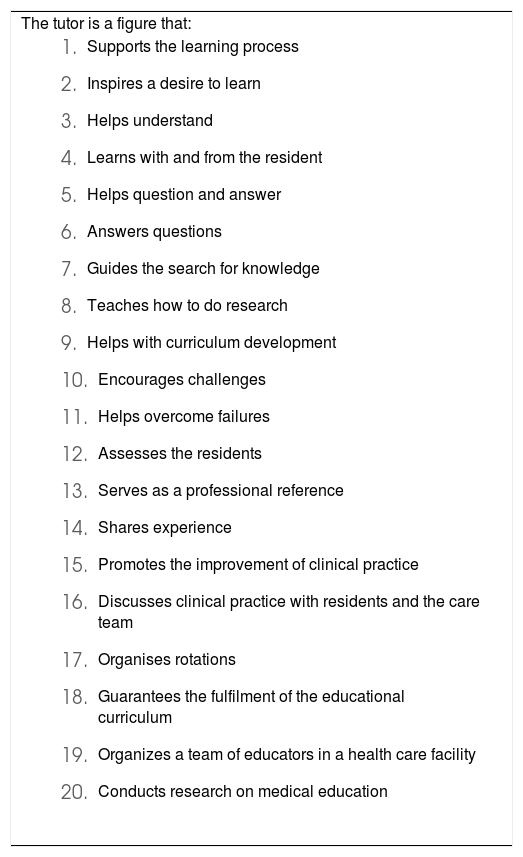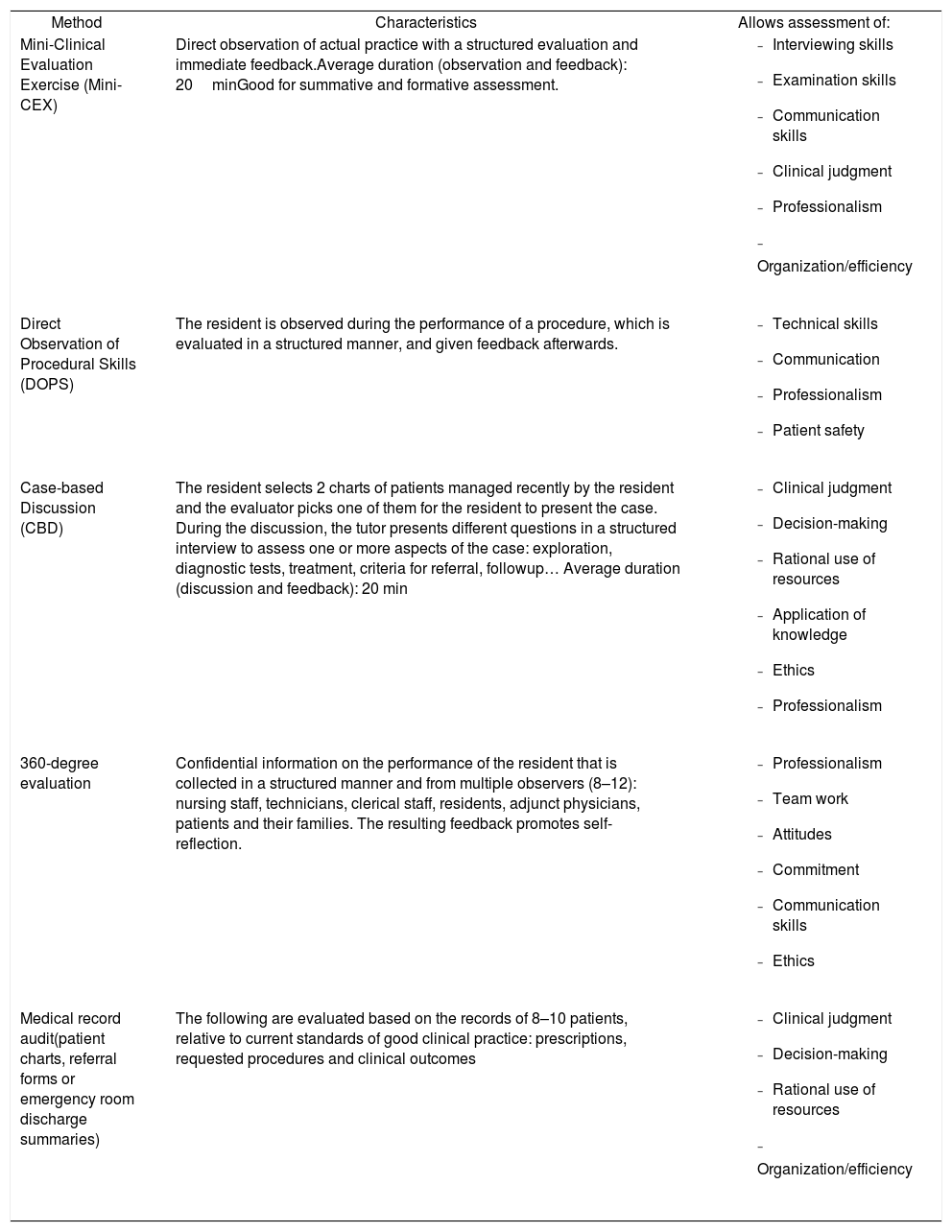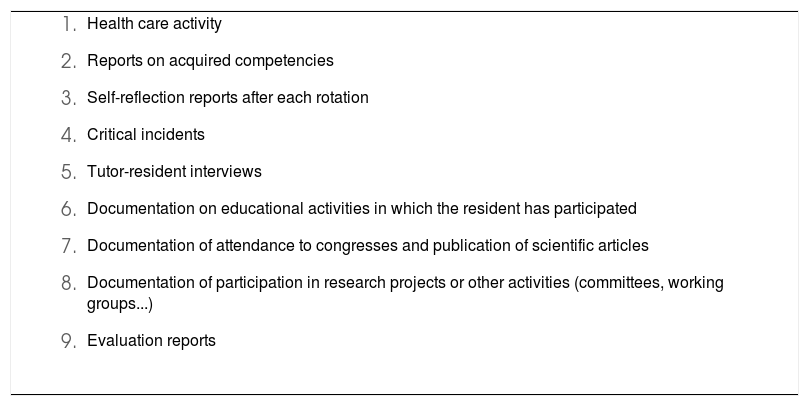The Spanish Association of Paediatric (AEP) has, among its objectives, to develop activities aimed at the training of its members. Thus, in 2013, it began its most ambitious training project, the virtual platform, “Continuum”. Now it presents a new section aimed at Internal Medicine Residents (MIR) in Paediatrics and their tutors: “I Prepare My Rotation By”-PMRP, which has as objectives to reduce the variation in MIR training, to help the tutors in their teaching function, to facilitate collaborative and skill-based learning, reflective training, and the resolving of the particular problems of the professional profile of each paediatric speciality.
PMRP is split into three main sections: “From where do we start” (with the sub-sections: self-assessment questionnaire and learning agreement), “Situations to resolve” (where the clinical scenarios that have been selected in the learning agreement are broken down), and “To where have we got” (which includes again the sub-sections at the beginning of the rotation in order to check if the expected objectives have been reached, and the assessment report). It also has other resources: prior knowledge, portfolio, and discussion forum.
Five features of the proposed training model should be highlighted: the clinical scenario as a starting point; skill-based learning (based on the Global Paediatric Educational Consortium); the assessment as a training stimulus; the power of collaborative learning, and the participation of the different specialist societies of the AEP in the development of its contents.
La Asociación Española de Pediatría (AEP) tiene entre sus objetivos desarrollar actividades encaminadas a la formación de sus socios. Así, en 2013 puso en marcha su proyecto formativo más ambicioso, la plataforma de formación virtual, “Continuum”. Se presenta ahora una nueva sección dirigida a los Médicos Internos Residentes (MIR) en Pediatría y a sus tutores: “Preparo Mi Rotación Por”- PMRP -, que tiene como propósitos disminuir la variabilidad en la formación de los MIR, asistir a los tutores en su función docente, facilitar el aprendizaje colaborativo y basado en competencias, el entrenamiento reflexivo y la resolución de problemas propios del perfil profesional de cada especialidad pediátrica.
PMRP se distribuye en tres secciones principales: “De dónde partimos” (con las subsecciones: cuestionario de autoevaluación y contrato de aprendizaje), “Situaciones a resolver” (donde se desglosan los escenarios clínicos que han sido escogidos en el contrato de aprendizaje) y “A dónde llegamos” (que vuelve a incluir las subsecciones del comienzo de la rotación, para comprobar si los objetivos previstos han sido alcanzados, y el informe de evaluación). Además, cuenta con otros recursos: conocimientos previos, porfolio y foro de debate.
Cabe destacar cinco aspectos del modelo formativo propuesto esta nueva sección: el escenario clínico como punto de partida; el aprendizaje basado en competencias (fundamentado en el Global Pediatric Educational Consortium); la evaluación como estímulo de formación; el poder del aprendizaje colaborativo y la participación de las diferentes sociedades de especialidad de la AEP en el desarrollo de sus contenidos.
In Spain, the training of specialists through the Medical Intern Resident (MIR) programme in the past 4 decades is one of the keys to the renown, prestige and high professional and scientific level achieved by its National Health System. This training is regulated by Law 44/2003, of November 21, on the Certification of Health Care Professionals1 and the provisions for its implementation,2–4 which define it as “official accredited education aimed at providing professionals with the knowledge, technique, skills and attitudes corresponding to the speciality in question, at the same time as the concerned party progressively assumes the responsibilities involved in the independent practice of the profession.”
The responsibility for organizing this training, overseeing its practical implementation and monitoring, analysing and following up on the adherence to the objectives specified in the educational curriculum developed by the National Committee on the Specialty of Paediatrics falls on the Committees of Education.4 In addition, these Committees are responsible for assigning the tutors in charge of guiding the residents through the activities programmed for their training period. An abundance of materials are being published on this subject, which is of utmost importance for maintaining the quality of specialised medical education in Spain.5–10
At present, a total of 1669 residents in Paediatrics and its Subspecialities are being trained in different hospitals and a few of the 56 Multiprofessional Educational Units in Paediatrics (MEUPs) distributed throughout Spain, which include 258 Primary Care training sites. Some studies conducted in Spain reveal that there is significant variability between MEUPs in the training offered to medical residents in Spa in.5
The Spanish Association of Paediatrics (Asociación Española de Pediatría, AEP) has set, among others, the objective of promoting the advance of paediatrics in the areas of care delivery, education and research, and of developing educational activities for its members. Thus, in 2013 the AEP addressed the obvious need of offering more accessible and easy to disseminate education reaching all paediatricians by the use of a virtual format, and launched its most costly and ambitious project to date, the “Continuum” platform, with the aim of promoting the acquisition, updating and continuous learning of the competencies in the practice scope of paediatricians and residents in paediatrics, thus ensuring the optimal care of the child and adolescent population. Along the same lines, the coordinating team of Continuum proposed a novel initiative to the Executive Board of the AEP that the latter believed would have a considerable impact on the education of the youngest professionals, and therefore gave green light to. In this article, we present the resulting new section aimed at paediatricians in training and their tutors: “I Prepare My Rotation by” (PMRB).
This new section, developed by different paediatric speciality societies of the AEP, is offered as a virtual complement to the MIR training programme and aimed at reducing the variability in the training of future specialists, supporting tutors in their role as educators (Table 1) and facilitating collaborative and skill-based learning, reflective practice and problem solving within the professional scope of each of the paediatric specialities in which the residents do a rotation.
The educational duties of the tutor.
| The tutor is a figure that: |
|
Document developed by attendees to the 3rd Tutor Training Course “The training of specialists in health care institutions”. November 24-28, 1997.
After 6 years of work and resource investment, Continuum is now able to offer to the members of the AEP the contents of its various sections (Interactive Clinical Cases, Novelties in the Literature, Highlighted Articles, Images of the Week, Library, Search Tools and Online Courses),11,12 based on a crucial Competency Matrix13 and having created the necessary infrastructure to support this new online training tool.
I Prepare My Rotation by is structured into 3 main sections: “Our Starting Point”, “Situations to Resolve” and “Where we have arrived”, which we now proceed to explain.
- •
“Our Starting Point” is comprised of:
- •
A self-evaluation questionnaire that allows the resident and the tutor to assess the level of knowledge and skills of the resident at the beginning of the rotation and to detect potential gaps in previous training.
- •
The “learning contract”, which includes: a) the clinical scenarios that the resident must face during the rotation, b) the specific learning outcomes to achieve in each of these scenarios and c) how the resident will be evaluated. The resident will choose among the presented options those clinical scenarios that he or she wishes to address during the rotation. Based on these choices, an individualised plan will be created to establish the structure and contents of the remaining sections. It is recommended that tutors offer personal guidance to each resident in the configuration of their own learning contract.
- •
“Situations to resolve”, which includes the clinical scenarios selected in the learning contract based on the time available for the rotation and that the resident must address during the latter.
- •
“Where we have arrived” includes:
- •
A self-evaluation questionnaire similar to the one used at the beginning of the rotation that evaluates the degree of learning transfer and promotes a critical assessment.
- •
The “learning contract” drawn at the beginning of the rotation to assess whether the established goals have been met.
- •
The report of the evaluation of the rotation, covering the teaching outcomes established in the learning contract, for the resident to print out and give to the tutor for completion.
In addition to the previous sections, the PMRB includes other resources:
- -
Previous knowledge: bibliography and basic documentation for each rotation.
- -
Portfolio: a virtual folder for the resident to store any documents he or she sees fit.
- -
Debate forum: for virtual sharing of concerns and reflections with other residents that are doing the same rotation. The forum is overseen and energised by moderators and tutors in the corresponding paediatric speciality.
Based on the premise that “one learns what one practices”, always accompanied by reflection on the part of the resident and feedback from the tutor, we propose that for each rotation, specialists-in-training learn to address between 6 and 12 clinical situations or scenarios, each of which in turn includes specific learning outcomes.14,15 The strength of the PMRB relies in these learning outcomes being specific, realistic and measurable, and that they refer to one or more of the three dimensions of learning: knowledge, skills and attitudes.
The enumeration of these learning outcomes is expected to be helpful in the following ways:
- -
Giving the resident clear and precise information on what needs to be achieved during the rotation: what must be learned, which situations the resident must be able to resolve independently and how performance will be evaluated.
- -
The tutors responsible for in-person training will know which activities must be pursued, the objectives that need to be evaluated in residents and what methods are available for the purpose.
To facilitate achievement of “learning outcomes”, each of them is linked to different training activities: clinical cases (obtained from either the Continuum platform or other sources in the literature), reference documents to be periodically updated and other educational materials (video, audio, images, films, websites, etc).
Competency-based learningThe competencies that provide the framework for the establishment of the learning outcomes for each of the clinical scenarios were selected from the Continuum Competency Matrix. This matrix, based on the curriculum proposed by the Global Pediatric Educational Consortium (GPEC), constitute the roadmap and the heart of Continuum, under the continued endorsement of the AEP.13
It is worth noting that Spain was the first member of the European Union to implement the Global Pediatric Curriculum, an initiative promoted by the GPEC, which was the first step toward sharing this document with the different Spanish-speaking countries in Latin America.
Evaluation as a stimulus to learningThe PMRB includes a “learning contract” that, as noted above, allows the tutor and the resident to choose learning outcomes that they will commit to achieving during the rotation, along with the educational activities to undertake and the means that will be employed to evaluate these outcomes.
As part of the training process, the evaluation must start from the beginning of the rotation, and constitute one of the important stimuli for learning. The purpose of evaluation is learning.16
Among the principles that govern the training of health professionals, Law 44/2003, of November 21, on the Certification of Health Care Professionals1 calls for the “establishment, development and updating of methodologies for the evaluation of the knowledge acquired by professionals and the performance of the educational system itself”. In the PMRB, tutors can select the evaluation method they will employ to assess each learning outcome, as described in Table 2.
Methods of evaluation in the workplace.
| Method | Characteristics | Allows assessment of: |
| Mini-Clinical Evaluation Exercise (Mini-CEX) | Direct observation of actual practice with a structured evaluation and immediate feedback.Average duration (observation and feedback): 20minGood for summative and formative assessment. |
|
| Direct Observation of Procedural Skills (DOPS) | The resident is observed during the performance of a procedure, which is evaluated in a structured manner, and given feedback afterwards. |
|
| Case-based Discussion (CBD) | The resident selects 2 charts of patients managed recently by the resident and the evaluator picks one of them for the resident to present the case. During the discussion, the tutor presents different questions in a structured interview to assess one or more aspects of the case: exploration, diagnostic tests, treatment, criteria for referral, followup… Average duration (discussion and feedback): 20 min |
|
| 360-degree evaluation | Confidential information on the performance of the resident that is collected in a structured manner and from multiple observers (8–12): nursing staff, technicians, clerical staff, residents, adjunct physicians, patients and their families. The resulting feedback promotes self-reflection. |
|
| Medical record audit(patient charts, referral forms or emergency room discharge summaries) | The following are evaluated based on the records of 8–10 patients, relative to current standards of good clinical practice: prescriptions, requested procedures and clinical outcomes |
|
We ought to highlight that the marks obtained at the end of the rotation, included in the evaluation report, are not recorded in the platform to safeguard confidentiality.
The power of collaborative learningPaediatric speciality societies can upon request establish debate forums associated to rotations. Online forums are a powerful tool for asynchronous communication and collaborative learning for the residents and tutors involved in rotations in the same speciality at any given time.
Residents can access forums once they have completed the self-evaluation questionnaire and officially submitted the “learning contract”, and the forum will remain available to them until the end of the rotation, when the documents of “Where we have arrived” are completed.
Moderators, appointed by the corresponding paediatric speciality society, play a key role in the forums, encouraging participation, promoting reflection, synthesising ideas and different courses of action to be debated in an atmosphere of trust and respect.
The forum can also be used to propose additional learning materials, inform of courses, congresses or other activities specifically geared towards residents and tutors and share summaries and educational experiences that could be incorporated to the platform and could contribute to improving the section.
Compiling evidence from learning and educational experiences: the portfolioOne of the resources included in this new section is the portfolio, which can serve as a “resident’s notebook” and allows the compilation of evidence in learning, self-reflection journals, and tests performed in the context of educational activities (Table 3).
Functions of the portfolio or resident’s notebook.
|
In addition, any activities performed by the resident in the different sections of Continuum are stored in “My Continuum” in association with the acquired competencies.
Another advantage of membership in the AEPAny member of the AEP registered in Continuum can access the new section. Educators that wish to participate in the forum must submit proof of membership to the corresponding paediatric specialty society under the AEP to be identified as tutors in this platform.
ConclusionI Prepare My Rotation by, the new section of Continuum developed by the different paediatric speciality societies of the AEP, aims to achieve the following objectives: to provide a virtual complement to the in-person education of specialists in training, facilitate competency-based and collaborative learning in residents in rotation in the same speciality at a given time, highlight the importance of objective evaluation throughout the rotation and providing tools for this purpose; allow the compilation of educational materials, experiences and evidence through the resident’s portfolio or notebook.
With this new section, the AEP expects to facilitate what renowned authors like Ruiz de Gauna et al.9 consider should be the nature of a specialist’s education: training professionals capable of thinking critically and with a social conscience that will practice medicine with a patient-centred rather than a disease-centred approach. Professionals skilled in the administration of resources, who promote evidence-based practices and adhere to the values of professionalism: justice, integrity, compassion and prudence.17
Conflicts of interestFrancisco Hijano Bandera and Javier González de Dios are codirectors of Continuum. María Rosa Pavo García and Esteban Peiró Molina are coordinators of Preparo Mi Rotación Por. Carlos Ochoa Sangrador and Carmen Villaizán Pérez are coordinators of the Competency Matrix of Continuum. María José Mellado Peña is the president of the AEP.
Coordinators of Continuum: Alberto García Salido, José María Garrido Pedraz, Manuel Molina Arias, Manuel Praena Crespo.







